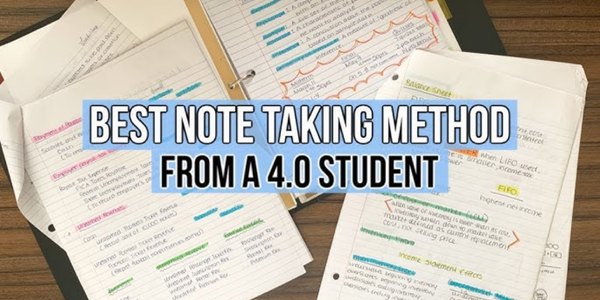College lectures can feel like a blur. You sit down with good intentions, but before long, your notes are disorganized, incomplete, or—let’s be honest—nonexistent. If this sounds familiar, you’re not alone.
The key to academic success isn’t just attending class—it’s mastering the right note-taking techniques for college. Whether you’re a visual learner, an auditory processor, or somewhere in between, there’s a method out there to help you retain information more effectively and study with confidence.
In this comprehensive guide, you’ll discover the best note-taking systems, how to use them in different subjects, and tips to stay consistent and organized throughout the semester.
Why Effective Note-Taking Matters in College
The Role of Notes in Academic Performance
According to cognitive research, we remember:
-
10% of what we read
-
20% of what we hear
-
70% of what we discuss or actively use
Taking good notes bridges the gap between passive listening and active learning. It boosts:
-
Comprehension
-
Memory recall
-
Test preparation
-
Engagement in class
Real-Life Example: How Better Notes Saved Jessica’s GPA
Jessica, a biology major, struggled during her freshman year. She switched from messy handwritten pages to the Cornell Method, paired with color-coded flashcards. The result? She went from a C-average to the Dean’s List in just one semester.
“I didn’t change my study hours—just my note-taking system. It made everything click.”
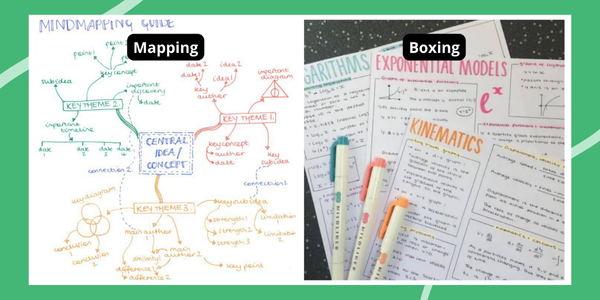
1. The Cornell Note-Taking Method
One of the most widely recommended note-taking techniques for college, the Cornell Method organizes your notes into three distinct sections.
How It Works:
Divide your paper into three parts:
-
Cue Column (Left): Keywords or questions
-
Note-Taking Area (Right): Main lecture notes
-
Summary (Bottom): Brief summary after the lecture
Best For:
-
Lectures heavy in theory or explanation (e.g., History, Psychology)
Pros:
-
Organizes notes clearly
-
Encourages review and reflection
-
Great for exam prep
2. The Outline Method
A traditional, flexible format that structures your notes hierarchically.
How It Works:
-
Use bullet points and indentation to group related ideas
-
Main topics on the left, supporting points indented below
Best For:
-
Logical, structured subjects like Business, Law, or English Literature
Pros:
-
Easy to scan and review
-
Helps identify relationships between concepts
-
Simple to adapt digitally or by hand
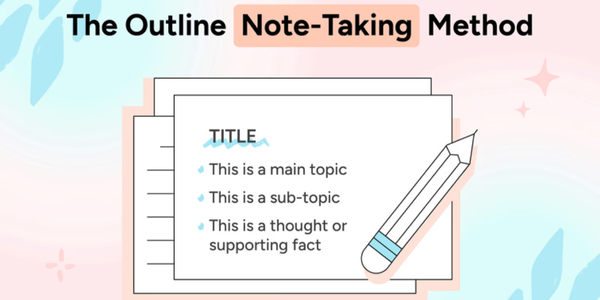
3. The Mapping Method
Great for visual learners, this method creates a web of ideas rather than a linear list.
How It Works:
-
Start with the central idea in the middle
-
Branch out with key topics and subtopics
-
Use arrows, lines, and color to show relationships
Best For:
-
Complex subjects like Biology, Philosophy, or any course with overlapping ideas
Pros:
-
Enhances memory through visualization
-
Encourages creativity and connection-building
4. The Charting Method
When dealing with lots of data or comparisons, the charting method excels.
How It Works:
-
Create columns and rows to organize information (e.g., definitions, dates, formulas)
-
Fill in the table during the lecture or while reviewing
Best For:
-
STEM courses like Chemistry, Statistics, or Accounting
Pros:
-
Keeps notes compact and structured
-
Easy to scan and memorize
-
Ideal for reviewing patterns and differences
5. The Sentence Method
A rapid-fire approach that works best when lectures are fast-paced.
How It Works:
-
Write every new thought or fact on a separate line
-
Keep sentences short and concise
Best For:
-
Fast-paced lectures or classes without clear structure (e.g., Guest speakers, Humanities)
Pros:
-
Quick and efficient
-
Easy to annotate later
-
Flexible for typing or handwriting
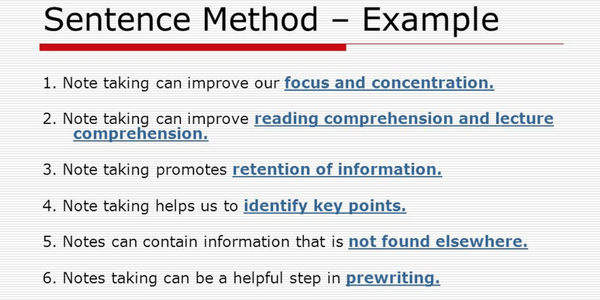
6. Using Digital Note-Taking Tools
Top Tools for College Students:
-
Notion – Flexible, customizable workspace
-
OneNote – Structured, great for the Cornell Method
-
Evernote – Syncs across devices, rich in features
-
Google Docs – Easy collaboration and simple formatting
Pros:
-
Cloud syncing means access anywhere
-
Easy to organize with tags and folders
-
Multimedia support (audio, images, links)
7. Handwriting vs. Typing: What’s Better?
Research Says…
A Princeton study found that students who handwrite notes retain more conceptual understanding than those who type. Why?
-
Writing forces you to process and summarize
-
Typing often leads to verbatim transcription
Recommendation:
-
Handwrite during lectures for memory
-
Type up and organize later for review
8. Note-Taking Tips for Different Learning Styles
Visual Learners:
-
Use diagrams, flowcharts, and color
-
Try Mapping or Charting Methods
Auditory Learners:
-
Record lectures (with permission)
-
Summarize aloud during review
Kinesthetic Learners:
-
Rewrite notes
-
Use flashcards or movement-based memory techniques
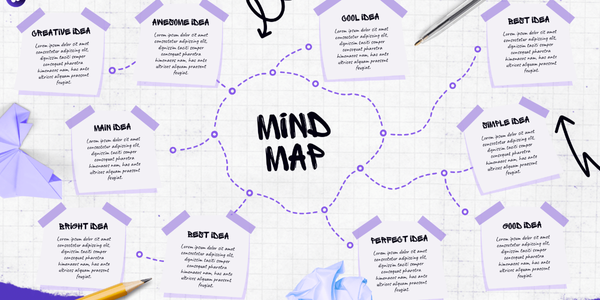
9. Review and Retention Strategies
Taking notes is step one. Retaining that information is the goal.
Try These Study Techniques:
-
Active recall – Quiz yourself without looking
-
Spaced repetition – Review over increasing intervals
-
The Feynman Technique – Teach it back in your own words
Weekly Review Plan:
| Day | Task |
|---|---|
| Monday | Review notes from Monday lectures |
| Wednesday | Summarize and quiz on key concepts |
| Friday | Reorganize messy notes into outlines |
| Sunday | Do a full weekly recap |
10. Bonus: Color-Coding and Annotations
Color adds clarity, especially for visual learners.
Sample System:
-
Red = Definitions
-
Blue = Examples
-
Green = Important dates/names
-
Yellow highlight = Likely test questions
Annotations:
-
Use symbols: ⭐ = important, ? = unclear
-
Add margin notes or sticky tabs for key points
Final Thoughts: Find Your Perfect System
There’s no one-size-fits-all approach. The best note-taking technique for college is the one you’ll use consistently and that helps you make sense of information. Try a few methods, mix and match, and evolve your system over time.
Remember, note-taking isn’t just about writing things down—it’s about learning how to learn.
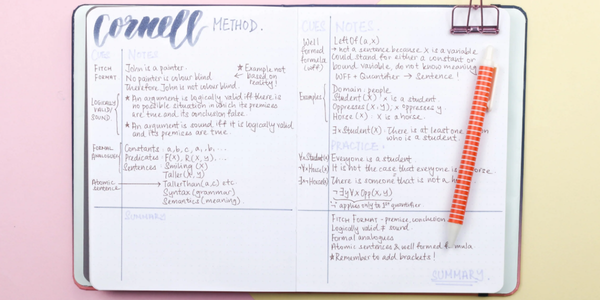
Ready to Master College Note-Taking?
📘 What method has worked best for you? Share in the comments!
🔎 Want more productivity tips? Explore our Top Study Hacks for College Students or Best Apps for Time Management in School.
